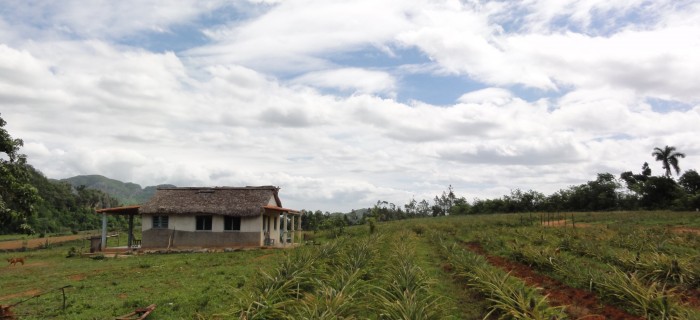Cuba’s New Agricultural Revolution: The transformation of food production in Cuba
May 2000, Development Report No. 14
Introduction
The first half of the 1990s witnessed the initiation of a major transformation of Cuban agriculture. From an emphasis on state farms, as the politically and technologically appropriate strategy of agricultural development, to the adoption of a new approach highlighting the advantages of tying producers to small areas; from an export-oriented production emphasis to the promotion of food crop production; and from a reliance on high technology to one on alternative technologies, this transformation is touching on a number of the central aspects of agricultural production and development. Together these changes have become the core of the Cuban government’s overall effort to resolve the dramatic crisis that had come to characterize the country’s agricultural sector and food security in the early 1990s. Their success or failure will be integrally related to the future course of Cuban socialism.
The most immediate stimulus for these changes was the desperate situation Cuba found itself in following the disintegration of the international division of labor, of which it had formed a part. With the societal transformations that occurred in Eastern Europe and the former Soviet Union in 1989 and 1990, and the resulting dissolution of the Council of Mutual Economic Assistance (COMECON) that they had been the centerpiece of, Cuba was suddenly faced with a drastic shortfall of imports of all kinds and the disappearance of preferential markets for its own principal exports.
The urgency of Cuba’s agricultural crisis of the early to mid-1990s highlights in a dramatic fashion the fundamental weaknesses inherent in the classical (socialist) model of development that its government adopted more than three decades ago.
The problems that Cuba experienced as a result of the COMECON’s disappearance pointed to a underlying tension, which also played a significant role in creating the need for the modifications currently underway in Cuban agriculture. That tension stemmed from the limitations inherent in the model of agricultural development that was adopted by Cuba’s socialist government in the early 1960s. Referred to by some (Pérez Marín and Muñoz Baños 1992; Rosset et al. 1993) as the “classical model” of agricultural development, it was characterized by its emphasis on agroexport production, its heavy reliance on mechanization of production processes, with a concomitant development of social services (especially its educational system) that encouraged a constant increase in this reliance through the exodus of people from the countryside, and overall priority being placed on state versus private farms. By the early 1990s it had become readily apparent there were fundamental weaknesses in this strategy, which made its appropriateness for a relatively small, strongly-agricultural economy highly questionable.
The following essay will examine the evolution of the transformation taking place in Cuban agriculture today. It will do so by focusing on the ways in which these changes have emerged and are taking shape in one sector of agriculture, that directed at the domestic market. By focusing on the food sector of agricultural production and distribution, we can obtain a clear picture of both the dimensions of the contradictions inherent in the classical model of development, as well as the importance of the modifications that are currently being implemented in Cuba’s countryside.
The arguments set forth in this essay are based on fieldwork conducted in Cuba during the 1990-1998 period, which involved interviews with policy-makers and implementers in the Ministry of Agriculture (MINAGRI), the Ministry of the Sugar Industry (MINAZ), and the National Association of Small Farmers (ANAP), as well as with agricultural producers organized in several forms of production relations: Basic Units of Cooperative Production (UBPC), Agricultural Production Cooperatives (CPA), and Credit and Service Cooperatives (CCS). In addition, analysis of secondary sources and government data was undertaken, which provides some of the “harder” evidence for my assertions about this transformation.
Stay in the loop with Food First!
Get our independent analysis, research, and other publications you care about to your inbox for free!
Sign up today!Our exploration of Cuba’s agricultural transformation will begin with a sketch of the classical model of development that dominated the policy making process toward this sector and society. The government’s response to the food crisis triggered by the disintegration of the COMECON will be analyzed through an assessment of the numerous efforts that have been initiated to address it, which form integral parts of the larger process of agricultural transformation. Finally, the agricultural transformation underway in Cuba today will be situated within a larger discussion of the transformation processes that have been set in motion in a variety of socialist, or formerly socialist, countries, with the goal of highlighting the similarities and differences between the Cuban case and the others. In so doing, I seek to assess the extent to which the changes taking place in Cuban agriculture approximate the emerging trend of transition away from what has heretofore been known as “socialist agriculture.”


 Help Food First to continue growing an informed, transformative, and flourishing food movement.
Help Food First to continue growing an informed, transformative, and flourishing food movement.




